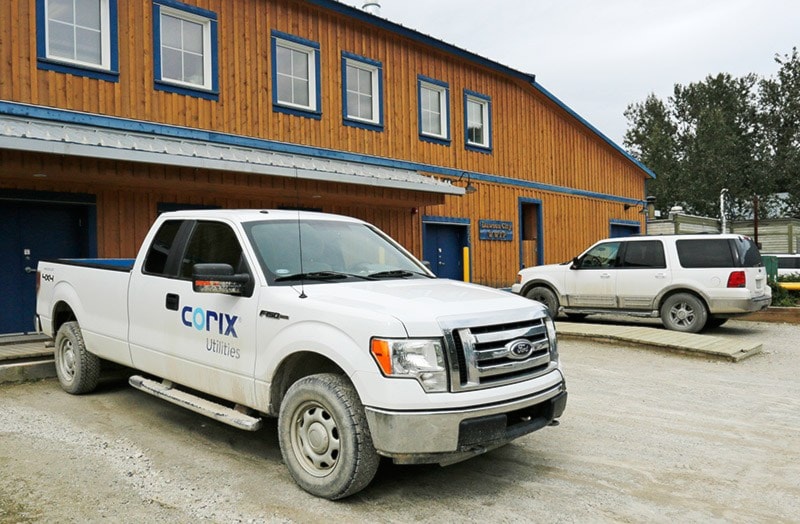Before he became premier, Sandy Silver referred to Dawson’s wastewater treatment facility as the WTF.
The reference to a curse word is one way someone might describe the plant that, years after being built, still doesn’t work quite right, according to the government.
Now the territory is prepared to take its builder — Corix Water Systems — to court.
But Community Services Minister John Streicker says the government is still working with Corix to try and fix the problems before it comes to that.
In a lawsuit filed Feb. 17, government lawyers say the plant, which has been running since 2012, doesn’t work and Corix hasn’t managed to fix it.
The lawsuit says the water coming out of the plant still doesn’t meet the requirements set by its water licence. Plus the government is alleging the company failed to hold up its end of the bargain around operating costs and electrical code requirements.
But don’t expect the two sides to be in front of a judge any time soon.
The Yukon’s Department of Community Services says the lawsuit was filed now in part so the territory doesn’t lose its bond to cover future efforts to get the plant to work.
The $12.4-million bond — essentially insurance to cover repairs if Corix can’t or won’t do them — was set to expire Feb. 20.
According to the government, the insurance company wasn’t willing to extend that timeline. If nothing had been done, the bond would have expired and the government could have lost its right to that money if it’s needed.
By filing the lawsuit, “the government has crystallized its claim for remedies under the bond” if it needs to fix the problems that have been identified in the lawsuit, spokesperson Bonnie Venton Ross said in an email.
The lawsuit also asks for $27 million from Corix — the value of the contract to design and build the plant.
“It is commonplace in a statement of claim against a contractor to claim for the entire amount of the contract,” Venton Ross said. “If this matter winds its way through the court process to trial, a judge will determine what the precise amount of the judgment will be.”
Streicker said any court process can only go forward after officials have tried everything they can think of to fix the plant.
“If you hadn’t explored those fixes they (the court) would just send you back to try them anyways.”
It’s difficult to say when the government might decide it’s time to bring the matter to court, the minister said.
“There are proposed solutions to the technical problems which exist so we will continue to try to seek solutions for those.”
Streicker didn’t go into detail about what specific solutions are being worked on.
He did say they aren’t the solutions proposed by Stantec Consulting in 2015. Those were estimated to cost up to $10 million.
According to reports on the Yukon Water Board website, the plant still sometimes struggles to meet the terms of its water licence in the summer.
The level of suspended solids in the water coming out of the plant is sometimes higher than what the water licence allows, according to the documents.
Running the plant has also been pricier than expected. Venton Ross said the Yukon government spent $1.67 million in 2015-16 and $1.28 million so far in 2016-17 to cover operation and maintenance costs.
When plans for the plant were first announced those costs were supposed to be somewhere around $300,000.
Streicker said the plant is still being run by Corix employees. The government is paying to have them flown in and out of the territory.
“We are transitioning to the plant being managed by local staff,” he said.
After opening the plant in 2012, Corix was supposed to hand over the operation to Dawson within a year. The high operating costs meant the Department of Community Services agreed to take over the plant instead.
But the plant did not meet its water licence requirements and Corix continued to run the facility.
In February 2015 it finally had three consecutive months of clean tests. That triggered Corix’s warranty on the equipment, which has now expired.
As for who will pay for the work that’s being done right now, that’s still being discussed, Venton Ross said.
“The solutions identified by the Yukon government and the contractor are the subject of ongoing discussions, and once an agreement has been reached we will be able to share information regarding costs, including costs to the Government of Yukon.”
Corix said it disagrees with the lawsuit.
“The Dawson wastewater treatment plant was designed and built to the specifications issued by the Government of Yukon, and successfully operates according to contract specifications,” the company said in a statement.
“We have worked cooperatively with Government of Yukon staff and advisors to find a cost-effective and practical solution to treat the high-strength influent that routinely overloads the plant in the summer months.”
Corix said it will keep working with the government to fix the plant.
Contact Ashley Joannou at ashleyj@yukon-news.com
